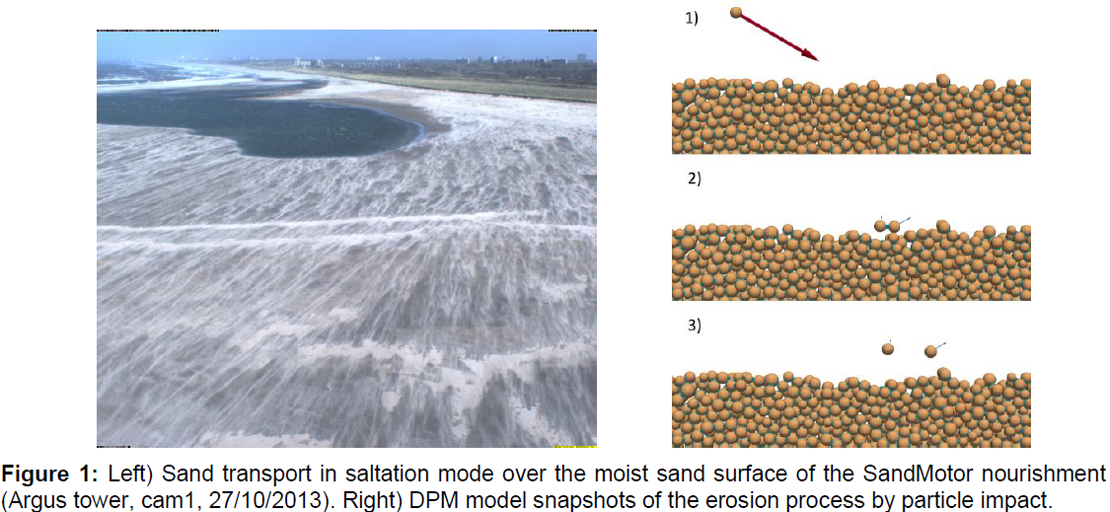Coastal dunes, backing beaches throughout the world, serve as important morphological features that protect inland areas from flooding. In the Netherlands, coastal dunes form the majority of the nation's defense system for flooding from the sea. To maintain the flood safety level provided by dunes, a sufficient amount of wind-driven sand supply is needed from the beach area, both to achieve recovery from storm surge erosion events and to support growth needed to match the sea level rise on the long-term. Shore nourishment emerges as a promising approach for creating a larger source area for sand to be picked up by wind. However, the presence of moisture on the beach surface adversely affects wind-driven sand pick-up. Hence, for optimizing the design of shore nourishment projects, it is crucial to be able to quantify the effect of surface moisture on the wind-driven sand transport rates.
In this project, you will investigate, for different moisture conditions, the sand surface erosion process, which plays a dominant role in wind-driven sand transport on beaches (Figure 1, left). Sand surface erosion involves a layer of "saltating" particles driven by wind above the beach surface. These particles then impact the beach surface, lifting additional saltating particles in the process. A discrete particle model developed by Wang et al. will be used, which includes a novel liquid bridge model to model the effect of surface moisture (Figure 1, right). The model is implemented in the open-source software MercuryDPM. The simulations are ready for use, and you will receive training on the software operation. If interested, you also participate in further code development.

The aim of this project is to figure out the effect of moisture on sand surface erosion by particle impact under various particle impact and moisture conditions. With the knowledge gained, the existing wind erosion formulations can be improved to better predict sand transport rates under conditions where moisture limits the supply of sand from the beach to the wind.
The following work can be expected:
- Based on literature, determine the valid range of values for the sand particle impact characteristics to model the erosion process in dry and wet conditions.
- Perform model runs using MercuryDPM.
- Determine and analyse the erosion rate under various particle impact characteristics and moisture contents.
- Modify the existing empirical erosion formulations of sand transport based on your findings.
We are looking for a student enthusiastic about coastal engineering and numerical modelling.




